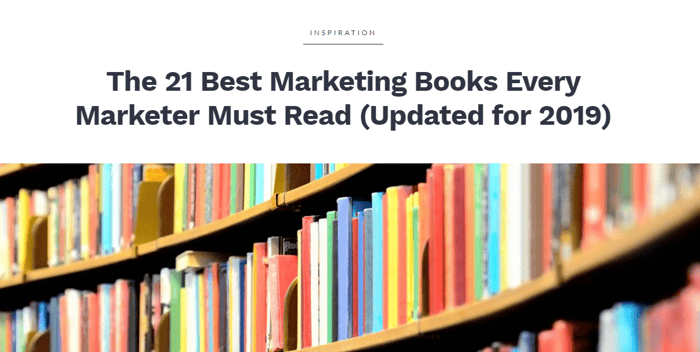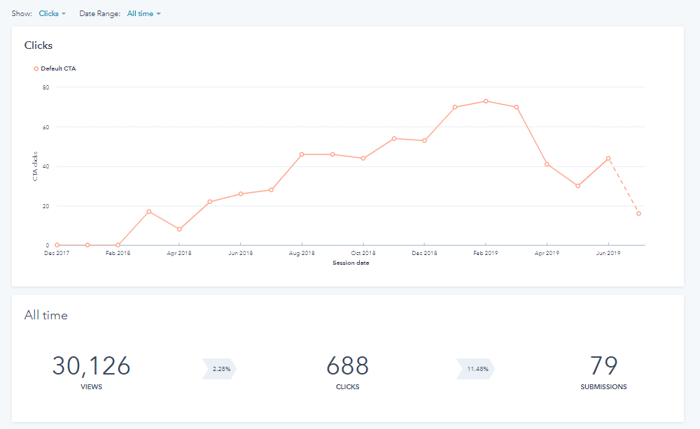It happens. Even the hardest hitting evergreen content will lose its luster at some point. But then what?
Do you let it rot away, maintaining a few hits per month? Or do you find a way to breathe new life into the asset, letting it continue its growth?
If you choose the latter, you'll be happy to see that a simple refresh can bring some dramatic results.
Using a Content Refresh to Improve Your Traffic, Conversions, and Customer Satisfaction
No matter how relevant and timeless your content, at some point, it's going to need extra love if you want to keep its engagement growing.
While any content can be refreshed, you should focus on your high performing pieces that are starting to lose traction. They've already proven themselves, and with a little attention, they can regain their previous stature. Content that wasn't performing well can still be refreshed, but the reason it wasn't resonating with your audience is likely not because it lacked an update. If you can unmask that reason, it'll serve the content better than giving it a refresh.
Making Content More Relevant
Relevance is one of the most critical factors in your content's performance. If the content isn't relevant, no one is going to read it because they see no point in doing so.
When content is relevant, it resonates with readers. It presents a solution to the problem they're dying to fix, and it's presented in a way that's digestible. Relevant content gets people engaging with the piece and builds trust with your brand, as they know they can look to you as a solution to their problem.
As your article ages, this relevance fades. Things change, and new advances in your industry alter how previous methods are perceived. It's kind of like the evolution of sunscreen. In the '80s, everyone thought it was the best way to avoid melanoma, so all recommendations said to wear it. Well, in the '90s and 2000s, it became apparent that those sunscreens weren't doing anything to prevent skin cancer, and new products were created that actually did what they claimed.
The previous information, commercials, pamphlets, and recommendations all became outdated in an instant, and if companies had continued promoting it, they would have lost trust in their consumers who were now more informed.
When it comes to updating, the content should be your main focus. The material they're engaging with needs to include the most up-to-date information it can provide. But, while the content needs to be straight, if your headline doesn't reflect that it's relevant, you're going to miss out on traffic.
If you do change the title, though, be careful about updating your URL without setting a redirect. Any links you've created that point to your article will break. A simple redirect can fix that.
Along the same vein, all links should be verified that they still work and exist, so you're not sending your audience to the wrong location.
Capturing New Insights
Any updates to the content will include new data. If you want to maximize the effect of these changes, you should inform your audience you've done so.
A note about an update offers transparency. Especially when building lists, if something is added or removed, you can provide additional context, so the reader understands why the change was made. The London Eater provides a change log at the top of its articles, showing when and what happened to the content. They also display the last update in the header of the page, so their readers know how fresh the content is.
While London Eater requires more consistent updates, there are other methods you can use to show you've conducted a refresh. For example, in the image below, we added the note right into the headline to affect our SEO and capture organic traffic for the added '2019.'
Since you're not starting from scratch with a new article, your update will provide a much quick boost in SEO results. For example, because you've likely created more content since you first published the piece you're refreshing, you also have the option of adding new links. This can increase your content's relevance and value, providing a better piece to your audience.
Increasing Conversions
Finally, conducting a content refresh can dramatically increase your conversions. This isn't intuitive, though. It requires some research into what content you have that's performing.
Since your current article has generated some data, you can study it to see which links are the most clicked, how your CTA is performing, or what traffic source a majority of your audience is coming from. If you have HubSpot, it's easy to look at your metrics and find the CTAs that are performing best.
All of this information allows you to optimize the content to better meet the needs of consumers. If one section receives more clicks than others, provide more material to better explain the point you're making. If users are spending a decent amount of time on the page but not clicking the CTA, it may serve you to run a test or change it.
You can also implement data from other articles. If a lot of people are engaging with a similar article that's newer, it may help you identify which piece of content to refresh first.
Refreshing Content To Get The Most Out of Your Work
Conducting a content refresh is the best way to take old content that's fading and bring it back to the forefront of your marketing efforts. By building on its previous results, you can provide your audience with content that's relevant, powerful, and valuable without needing to create a new piece.








